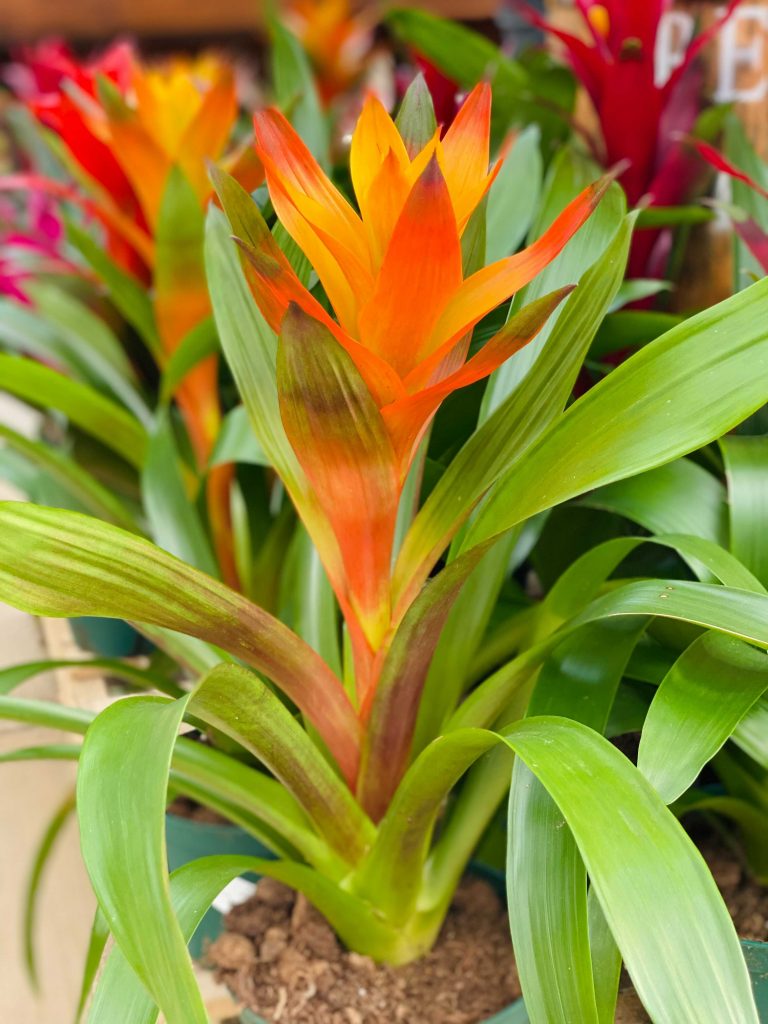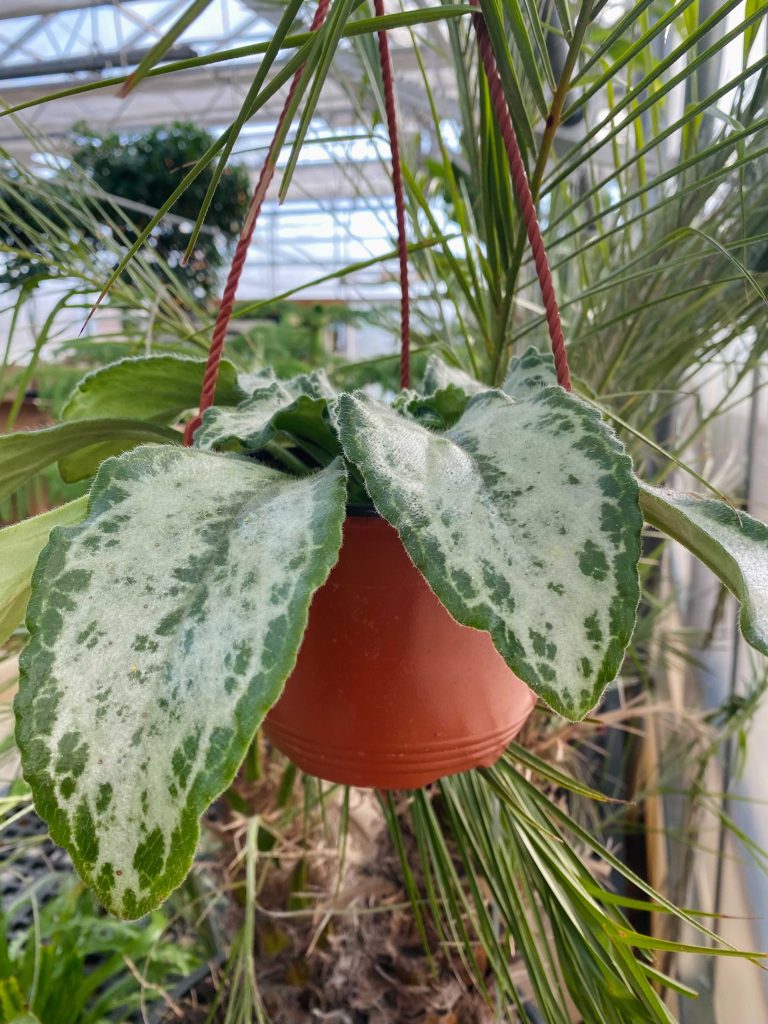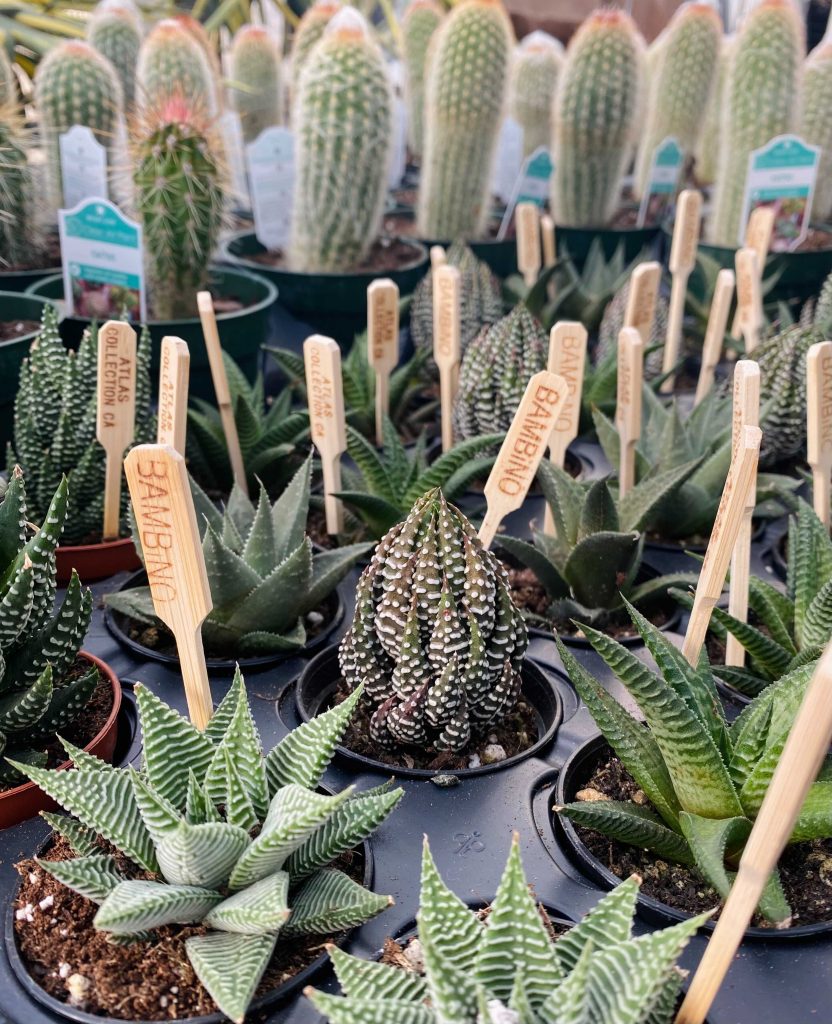Tropical Houseplant Guide for Plant Parents and Hesitant Buyers!

Tropical plants are here and more are coming your way to the garden center in Sickles Market in Little Silver. These are beautiful, lush green plants that will make your house a tranquil place to come home to. Don’t be afraid to adopt a wonderful plant in your life. The new ones in our greenhouse are perfect for first-time plant parents.

We have some plants that may require a little more effort, but not one of them requires the force of Mother Nature’s care. If you are never home, if you’re home all the time, or if you have 10 green thumbs – you’ll find a plant baby to make you a very happy parent!
Philodendron-Monstera Deliciosa Monstera is a species of evergreen tropical vines/shrubs that are native to Central America. Monsteras are famous for their natural leaf-holes and have led to the rise of a special nickname, the Swiss Cheese Plant! Monstera Deliciosa leaf holes eventually grow towards the edge and open up as they mature.
Water: Water every 1-2 weeks.
Light: Thrives in bright to medium indirect light.
Temperature: 65°F-85°F (18°C-30°C).
Sansevieria-Black Coral This plant is commonly called the Snake plant. This name comes from the tall, thick leaves featuring dark green with light green markings.
Water: Water when the top several inches of the soil is dry. When watering, water thoroughly.
Light: Place under bright indirect light, full sun, or bright lighting when grown outdoors.
Temperature: Black coral also grows well indoors at normal room temperature.
Ficus-Moclame The Moclame’s thick rounded leaves make it uniquely identifiable. Its small branches are most conducive to hedge pruning, and with patience, its outward appearance can be highly controlled. It reminds us of a tree from Alice in Wonderland! From the Queen of Hearts land, if you want to get specific!
Water: Ficus Moclame prefers soil that is consistently and evenly moist, not soggy. You want to allow the top 1” – 2” of the soil to dry between waterings.
Light: In extremely bright apartments (i.e. floor to ceiling windows) they may get sunburned, and in this instance, the safest bet is putting them in front of a sunny window with a sheer curtain. Do not block the light with a partial shade like a solar shade as they will block out the full spectrum of the sun’s radiation.
Temperature: 60°F-68°F, 16-24°C.
Bromeliad Tillandsia Tillandsia grows attached to other surfaces. A few can be grown in a pot or in the ground, but typically they grow best mounted on another structure. On a Tillandsia, roots are primarily used as support.
Water: The best time of day to water a Tillandsia is in the early morning. This will give the plants plenty of time to dry out before they increase their intake of carbon dioxide. 2-3 times a week.
Light: In your home, a Tillandsia will do well in indirect sunlight. The plant will enjoy a lot of light. However, too much direct sun, such as a south-facing window, can burn the plant and cause damage to the leaves.
Temperature: Optimum temperature range for tillandsias is 50 – 90 degrees F.

Cactus-Espostoa This cactus hails from Peru and Ecuador and is also known as Peruvian Old Man Cactus has sharp spines or thorns. Outdoors, Peruvian Old Man Cactus grows to be about 8” inches in diameter and as high as 23’ feet tall. If kept indoors, growth will naturally be somewhat controlled
Water: The plant should be watered well during the hot months of the summer, but leave plenty of time for the soil to dry out thoroughly between waterings. During the wintertime, your cactus should be kept dry.
Light: Lighting should be bright in the wintertime and quite sunny throughout the summer.
Temperature: As a desert dweller, this cactus does well in full sun exposure.
Aglaonema-Silver Bay The Aglaonema “Silver Bay” (Chinese evergreen) is a large, lush plant that’s a perfect addition to any office or room. They are versatile, ranging from large (floor plants) to small (perfect for tables or desktops).
Water: You should water this plant when the top two inches of the soil are dry. If it’s kept too wet, the leaves may start to turn yellow and drop off. Water every one to two weeks.
Light: They can thrive in bright, medium, or low light, as long as it’s indirect.
Temperature: Silver Bays prefer temperatures in the 60’s and 70’s.
Aglaonema-Spring Snow Are often vibrant and colorful, with strikingly patterned leaves. Because they’re so easy-going, Aglaonemas are perfectly suited for a dim bedroom or cozy study. Because of their tolerance for both moist and dry conditions, and the fact that they will thrive with low light, they are a perfect choice for less than ideal light conditions or forgetful plant owners.
Water: Soil should be left to dry before watering again, and the occasional dead leaf will need to be removed every now and then.
Light: Shade to partial shade
Temperature: During the winter, it is important to keep this plant away from drafts and cold temperatures.
Palm-Ponytail Guatemalan This palm is native to the dry regions of Guatemala. Because it has a need for little water or attention this is an excellent plant for anyone who has never had houseplants before or those who may have failed with more demanding plants in the past.
Water: Allow soil to dry between thorough waterings.
Light: Bright Light
Temperature: 50° to 80°F
Flowering-Anthurium Red Hot Anthurium Red Hots are easy to grow, flowering plants that produce lightly scented blooms throughout the summer. Anthurium Red Hots will grow happily and flower in a pot or in-ground. They add a tropical accent to any outdoor space, garden, or patio. In cooler zones, a containerized Anthurium Red Hot can be relocated indoors for the winter months.
Water: Water your Anthurium well and then allow the top 1-2 inches of soil to dry out before watering again.
Light: Place your Anthurium in a warm, well-lit spot.
Temperature: Your Anthurium prefers temperatures between 65-80 degrees.
